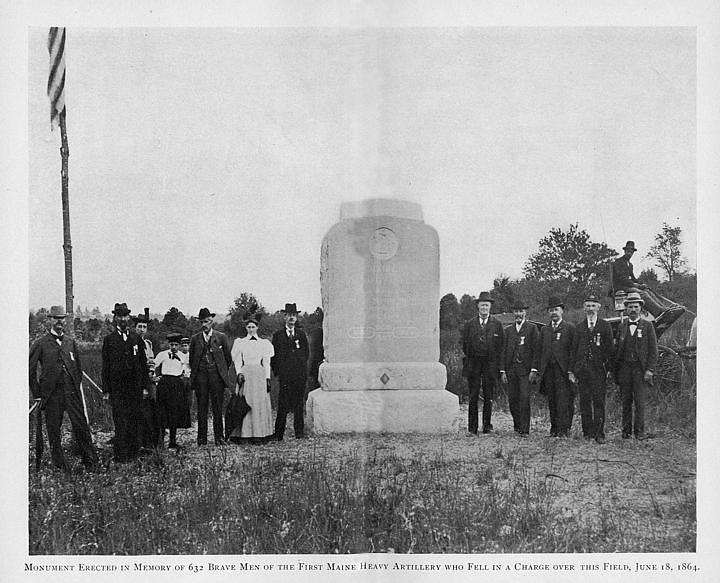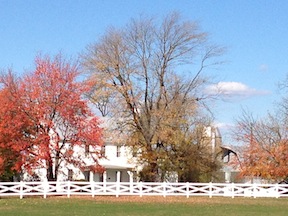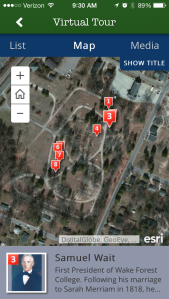A monument stands in the Petersburg National Battlefield near Colquitt’s Salient Trail. Today there are tall pine trees, a paved path and quiet. It’s hard to imagine that this exact spot was once an open field described as “a burning, seething, crashing, hissing hell”.
 Lieutenant Horace H. Shaw used those words to describe the events of 18 June 1864, when the 1st Maine Heavy Artillery regiment, some 900 men, were ordered to charge across 300 yards of open field to attack the Confederate breastworks near the tree line. Of the nine hundred, 632 were killed or wounded in the span of 10 minutes. The largest loss of life in a single action of any regiment in the war.
Lieutenant Horace H. Shaw used those words to describe the events of 18 June 1864, when the 1st Maine Heavy Artillery regiment, some 900 men, were ordered to charge across 300 yards of open field to attack the Confederate breastworks near the tree line. Of the nine hundred, 632 were killed or wounded in the span of 10 minutes. The largest loss of life in a single action of any regiment in the war.
 In 1895, Horace Shaw organized funds to purchase the land and commission the monument [details here].
In 1895, Horace Shaw organized funds to purchase the land and commission the monument [details here].
 One of the survivors was my 1st cousin 4x removed George A Stanhope, older brother of Gilbert. George was 22 when he enlisted in 1862, his first child Emma had been born just a few months before. In November of 1864 he was promoted to Corporal and returned to Robbinston, Maine when he mustered out in June of 1865. He and his wife Susan (Laskey) had nine more children, I’ve only found seven of the ten so far: Emma, Sophronia, George Jr, John, Mary, Alice and Jessie. Susan died in 1912 and two years later George married Sophia Hatt. He died 24 May 1919 in Calais, Maine.
One of the survivors was my 1st cousin 4x removed George A Stanhope, older brother of Gilbert. George was 22 when he enlisted in 1862, his first child Emma had been born just a few months before. In November of 1864 he was promoted to Corporal and returned to Robbinston, Maine when he mustered out in June of 1865. He and his wife Susan (Laskey) had nine more children, I’ve only found seven of the ten so far: Emma, Sophronia, George Jr, John, Mary, Alice and Jessie. Susan died in 1912 and two years later George married Sophia Hatt. He died 24 May 1919 in Calais, Maine.

The more I read about what the men of the 1st Maine went through, the more I respect and appreciate the sacrifice made by the men and women in our military. I will certainly make every effort to observe Memorial Day more formally going forward, they deserve at least that.
If you are planning to visit this National Park, I’d highly recommend a visit to Civil War Hikes.

Images Courtesy of Clarence Woodcock http://www.cwoodcock.com/firstmaine/index.html
Original source for much information about the 1st Maine and the first 3 images:
Shaw, Horace H, and Charles J House. The First Maine Heavy Artillery, 1861-1865: a History of Its Part and Place In the War for the Union, with an Outline of Causes of War and Its Results to Our Country. Portland, Me, 1903. Available online via GoogleBooks ( http://books.google.com/books?id=G50dAQAAMAAJ ) Accessed 20-22 May 2014.
This post is 21st in the 52 Ancestors in 52 Weeks challenge series.


![Year: 1890; Census Place: Jonesboro, Whitneyville and Marshfield, Washington, Maine; Roll: 7; Page: 3; Enumeration District: 59. Ancestry.com. 1890 Veterans Schedules [database on-line]. Provo, UT, USA: Ancestry.com Operations Inc, 2005.](https://eluceydator.com/wp-content/uploads/2014/05/mem123_7-0882.png?w=580&h=219)










